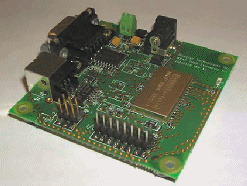

|

|
| Sujeevan ASEERVATHAM | PhD |
| Home | Publications | Teaching | Projects | Links | Contact |
.:: Projects : RESEDA, A Java-Based Diagnostic System ::.
The diagnostic demonstrator was developed after the end of the RESEDA project. The demonstrator was made to evaluate the results of our research on model-based diagnostics.
The RESEDA projet (Réalisation d'un Environnement Système Evolutif pour le Diagnostic Automobile) aimed to realize a system evolutionary environment for automotive diagnostics. The Java language was selected to develop the environment (see the RNTL page for more information).
The RESEDA projet (Réalisation d'un Environnement Système Evolutif pour le Diagnostic Automobile) aimed to realize a system evolutionary environment for automotive diagnostics. The Java language was selected to develop the environment (see the RNTL page for more information).
The diagnostic pogram (diaglet) developed in Java using the diagnostic framework (see the projects' main page for more information about the framework) was adapted for J2ME environments. Then, it was installed on a hardware card with a Java microprocessor (the Java diagnostic card).
The card can be embedded in any environment with a CAN communication bus as all the communications between the diag card and the external environment are, exclusively, done via the CAN bus.
The card can be embedded in any environment with a CAN communication bus as all the communications between the diag card and the external environment are, exclusively, done via the CAN bus.
The diagnostic programs monitor the target system and display any faulty behaviour on the car's dashboard. The driver can know, instantly in real-time, the car's system state and act consequently. Moreover, as the diagnostic messages are made available through the CAN bus, the car's system can also process special procedures according to the type of messages. For example, if a critical fault is reported, the car's electronical control unit (ECU) can decide to stop the vehicle until the situation is corrected.
The diagnostic programs also record the behaviour of the car so the drive can be replayed and analyzed to quickly find the root cause of any faults. The recorded logs are made available through a secure radio connection such as bluetooth or GSM. For example, if a fault is detected, the mechanic will only have to connect, with his computer, to the Java diagnostic card with a bluetooth connection, to retrieve the recorded logs.
The diagnostic programs also record the behaviour of the car so the drive can be replayed and analyzed to quickly find the root cause of any faults. The recorded logs are made available through a secure radio connection such as bluetooth or GSM. For example, if a fault is detected, the mechanic will only have to connect, with his computer, to the Java diagnostic card with a bluetooth connection, to retrieve the recorded logs.
The demonstrator is composed of the diagnostic programs, a hardware card and 3 software simulators:
- the Diaglet which is the diagnostic program with a bluetooth server (developed under J2ME),
- the Java Diag Card which is a hardware card embedding the diagnostic programs,
- the dashboard simulator displaying the speed of the car and the diagnostic messages,
- the ECU simulator simulating the ECU operations such as acceleration and breaking commands received from a driver (in fact, the driver is only a script executing a defined scenario),
- the remote log analyzer which is used to establish a secure remote connection with the Java Diag Card and to retrieve and display the recorded logs.

|
Some photos taken at the "Savantes Banlieues 2006" event
The evaluation diagnostic card
 |
The snap module, from Imsys Technologies, is a small card with SIMM sockets embedding a java microchip, a 2 MB flash eprom and a CAN controller. The java diagnostic program (Diaglet), developed using J2ME, is installed on a flash eprom which is read and executed by a native java microchip : the IMSYS Cjip microprocessor. |

|
The Wrap Thor evaluation module, from Bluegiga Technologies, contains a Bluetooth transceiver (the Wrap Thor module) and a RS-232 serial controller (UART). The communication between the java diagnostic program and the Wrap Thor module is enabled via a RS-232 serial communication. |

|
The Step+ evaluation board, from Systronix, is a socket board with interfaces for SIMM sockets, 10/100 BaseT Ethernet, RS-232 serial, CAN ... Moreover, it is equipped with RS-232 UART controllers. We use this board as the mother board. The SNAP module is connected via the SIMM Sockets and the Wrap Thor module is connected via the RS-232 ports. |


